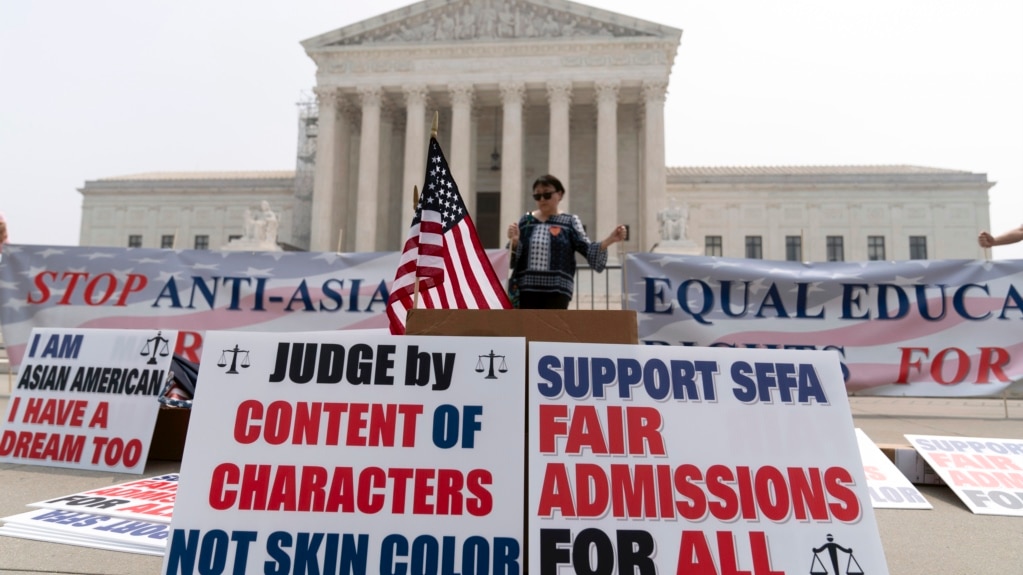The United States Supreme Court on Thursday struck down the consideration of race in college admissions at Harvard University and the University of North Carolina.
The decision ended affirmative action policies used by American colleges to increase the number of Black, Hispanic and other minority groups. Affirmative action is a set of policies meant to end unlawful discrimination. The policies were put in place with the idea of helping people in a group that has been discriminated against in the past.
The high court’s decision was six to three against the University of North Carolina (UNC) and six to two against Harvard. Justice Ketanji Brown Jackson did not rule in the Harvard case because of her links to that university.
Chief Justice John Roberts wrote for the majority. He wrote that “the student must be treated based on his or her experiences as an individual — not on the basis of race.” He added, “Many universities have for too long done just the opposite. And in doing so, they have concluded, wrongly, that…an individual’s identity is not challenges bested, skills built, or lessons learned but the color of their skin. Our constitutional history does not tolerate that choice.”
Justice Sonia Sotomayor wrote in dissent that the decision “rolls back decades of precedent and momentous progress.” And Justice Ketanji Brown Jackson called the decision “truly a tragedy for us all.”
The ruling
The justices ruled in favor of a group called Students for Fair Admissions. The group, founded by anti-affirmative action activist Edward Blum, accused UNC and Harvard of discrimination in violation of the U.S. Constitution.
On Thursday, Blum cheered the decision, saying, “Ending racial preferences in college admissions is an outcome that the vast majority of all races and ethnicities will celebrate.”
Harvard and UNC had argued that they only consider race in a limited way as permitted under earlier Supreme Court rulings. The two universities said Thursday that they would follow the latest decision.
In a statement, the nation’s oldest private college said, “Harvard must always be a place of opportunity, a place whose doors remain open to those to whom they had long been closed, a place where many will have the chance to live dreams their parents or grandparents could not have dreamed.”
In 2003, the court ruled that the University of Michigan’s law school could consider race in admissions to create “a diverse educational environment." Blum and others again asked the court in 2016 to consider the admission policy of the University of Texas at Austin. And the court ruled that the use of race in the university's admissions efforts was constitutional.
That was before three appointees of former President Donald Trump joined the court. The three, Justices Neil Gorsuch, Brett Kavanaugh, and Amy Coney Barrett, expanded the court’s conservative majority.
Trump is a leading candidate for the Republican presidential nomination. He praised the decision saying, “This is a great day for America… We’re going back to all merit-based—and that’s the way it should be!"
Speaking from the White House, President Joe Biden criticized the court for overturning years of precedents. Biden said, "I believe our colleges are stronger when they're racially diverse. Our nation is stronger...because we are tapping into the full range of talent in this nation." He added, “We cannot let the decision be the last word.”
The Associated Press reported that federal data showed the number of nonwhite students increased by 55 percent from 2010 to 2021 at the small group of highly selective colleges known as the Ivy League. That group, which included Native American, Asian, Black, Hispanic, Pacific Islander and biracial students, made up 35 percent of students at the schools in 2021. In 2010, that number was 27 percent.
The latest court ruling means that college officials will have to look for new ways to make decisions about the students they admit.
I’m Mario Ritter, Jr.

